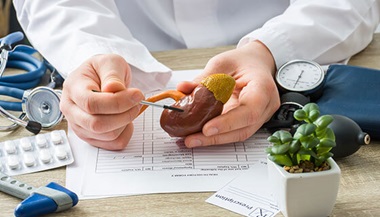Esophagoscopy
Esophagoscopy is an endoscopic procedure that involves inserting a flexible or rigid tube-shaped viewing device into the mouth and then advancing into the esophagus.
When an endoscope is used to view the esophagus and parts of the upper digestive tract (the stomach and the first section of the small intestine), it is called an esophagogastroduodenoscopy (EGD), also sometimes referred to as an upper endoscopy. However, it is not an esophagoscopy.
Why is an esophagoscopy performed?
Esophagoscopy is performed to diagnose and treat health issues in the esophagus. It may be used to:
- Take small tissue samples (biopsies)
- Identify and remove abnormal tissue
- Identify and retrieve foreign bodies
- Identify areas of narrowing. Esophageal narrowing can be congenital (meaning present at birth) or can be acquired (resulting, for example, from surgery or inflammation).
- Dilate a stricture (an abnormal narrowing), or for incision of narrow areas
- Place tubes in the stomach or esophagus for feeding or testing
- Perform endoscopic vacuum-assisted closure therapy for esophageal leaks
- Inject medication, such as steroids, into scar tissue
Health issues that may prompt a doctor to recommend an esophagoscopy include:
- Esophageal cancer
- Gastroesophageal reflux disease
- Swallowing issues (dysphagia)
- Upper abdominal pain
- Nausea
- Vomiting
- Suspected foreign body ingestion
- Strictures, acquired or congenital
Esophagoscopy Procedure
Esophagoscopy is usually performed under general anesthesia. It is performed with a flexible (generally used by gastrointestinal doctors or surgeons) or rigid (generally used by surgeons) scope passed through the mouth and into the esophagus. The scope includes a viewing device, such as a camera with lighting and instrumentation ports. The viewing channel is often connected to television monitors in the operating room so the surgery team can see the scope’s progress and position.
Medical instruments may then be passed down the scope, including the following:
- Biopsy forceps to grasp small tissue pieces from the lining of the esophagus (food pipe)
- Foreign body removal devices
- Injection needles
- Rubber bands to treat varices (big veins) in patients with liver disease
- Balloon dilators
- Incision devices
- Clips, which are small metal clamping devices used to join the surrounding tissue together to reduce risk of bleeding or leak
During another type of esophagoscopy, transnasal esophagoscopy, a slimmer gastroscope is advanced through the nose to the esophagus. This procedure does not require anesthesia.
Esophageal Dilation
Esophageal dilation is a procedure used to stretch a narrowed area of the esophagus, sometimes done as part of esophagoscopy. It is performed by passing a series of flexible rubber dilators of increasing size or by placing a deflated balloon through the endoscope, which is then positioned at the site of narrowing. The balloon is then inflated to stretch the esophagus.
Sometimes, a structure may require cutting a portion of the scar tissue, followed by balloon dilation. Occasionally, an esophageal leak may occur, requiring placement of a vacuum-assisted sponge for healing.
Esophagoscopy Recovery
After waking up from anesthesia, patients may experience a dry or sore throat, which can be easily treated and resolved quickly. Patients are usually able to eat and drink shortly after they are awake, and most are discharged within an hour or two.
If anesthesia is used during the procedure, it is important to arrange transportation home.






